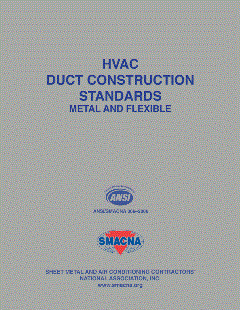Existing standards for these products are based on commercial refrigeration standards written in the Energy Policy Act of 2005, which failed to include unique efficiency standards for self-contained commercial refrigerators and freezers.
Several members of Congress, including Reps. Bruce L. Braley, D-Ia., and Lynn Westmoreland, R-Ga., are working to fix this oversight that they believe places an unjust burden on refrigerated display case manufacturers.
Braley and Westmoreland introduced H.R. 5710, the Better Use of Refrigerator Regulations (BURR) Act, on May 10. The bill amends the Energy Policy Act of 2005 and establishes minimum efficiency standards for self-contained commercial refrigerators and freezers.
On June 21, House members amended H.R. 4480, the Domestic Energy and Jobs Act, to include the BURR Act in its entirety. The motion was approved through a voice vote, and the amended bill was approved by the House, 248-163. The bill was supported by 229 Republicans and 19 Democrats. The legislation was received by the Senate on June 25 and was referred to the Senate Committee on Energy and Natural Resources, which has yet to act on the bill.
Why is the Legislation Necessary?
The DOE currently requires deli-style cases to adhere to the same standards as commercial walk-in refrigerators. However, the abundant use of glass and lighting makes it nearly impossible for deli-style refrigerators to reach the minimum efficiency standards set forth in the 2005 law, essentially stranding the product line without a designation.
The BURR Act would fix this by establishing a distinct product class at the DOE for deli display cases and similar medium temperature commercial refrigeration units.
“When government regulations defy common sense and put jobs at risk, it’s time for a change,” said Braley. “With their regulation the Department of Energy has effectively outlawed refrigerated display cases commonly found in grocery stores, delis, ice cream shops, and restaurants. This regulation is unfair and harmful to manufacturing. Our bipartisan bill will reverse this misguided regulation and protect American jobs.”
The bill, if approved, would recognize a medium temperature commercial refrigerator as a unit with a self-contained condensing unit equipped with sliding or hinged doors in the back intended for use by sales personnel, and with glass or other transparent material in the front for displaying merchandise.
The unit must be intended to serve as a counter for transactions between sales personnel and customers, and may not have a height greater than 66 inches.
The total display area of the refrigerated case must follow Air-Conditioning, Heating, and Refrigeration Institute (AHRI) Standard 1200.
Each medium temperature commercial refrigerator manufactured on or after the six-month date following enactment of the bill shall have a total daily energy consumption of not more than 0.6 multiplied by the total display area of the refrigerated case plus 1.0.
“Sometimes smaller issues, like this one, are overlooked in a federal government as large as ours. But, that doesn’t mean they aren’t important and don’t impact the livelihood of many Americans,” said Westmoreland. “By creating a separate product class for these display cases, we are allowing American manufacturers to continue to make and sell them — saving American manufacturing jobs — and we can do so at no cost to the American taxpayer.”
Industry Support
AHRI calls the bill non-controversial and said the legislation’s common sense language has already attracted cosponsors from both parties.
“The bill is based on service-over-the-counter language that was originally included in S. 398, the Implementation of National Consensus Appliance Agreements Act (INCAAA), a broad efficiency and product classification bill in the Senate,” said Cade Clark, assistant vice president of government affairs, AHRI. “The correction to federal minimum efficiency standards for service-over-the-counter commercial refrigeration products contained within the BURR Act is a necessity because the original, incorrect standards were established by Congress in 2005.”
In less than two months, the BURR Act has netted nearly 20 bipartisan cosponsors. “Our belief that standalone legislation could effectively be attached to any fast-moving energy bill proved correct,” said Guido Zucconi, congressional affairs director, AHRI. “Thanks to the hard work of Representatives Westmoreland and Braley, and our members, the BURR Act passed on a voice vote, underscoring its status as essential, common sense, non-controversial legislation.”
AHRI is now urging the Senate to rapidly approve the bill.
“The House vote was an important victory for manufacturers, but our work on this issue is far from finished, as the Senate still needs to act,” said Zucconi. “In addition, we also need to keep fighting for small-duct, high velocity efficiency corrections and water heater test procedures, both of which are included in the Senate INCAAA bill.”
Charlie McCrudden, vice president of government affairs, Air Conditioning Contractors of America (ACCA) said commercial contractors and manufacturers could be under a great deal of scrutiny if this government error.
“If the Department of Energy chose to start enforcing the regulations on the books, it would impact workers in the factories, their suppliers, and the millions of restaurants that rely on these products,” he said. “While the Westmoreland and Braley amendment is a small part of the greater energy policy debate, it certainly impacts HVACR contractors and their commercial customers.”
McCrudden also said the bill’s chances, at least in 2012, are not good. “Senate Majority Leader Harry Reid isn’t likely to bring a bill to the floor that has so much Republican support in an election year. So, even if the Westmoreland and Braley amendment is approved and attached to the bill, it will need to find another legislative vehicle to make it over to the Senate for consideration.”
Publication date: 8/27/2012








